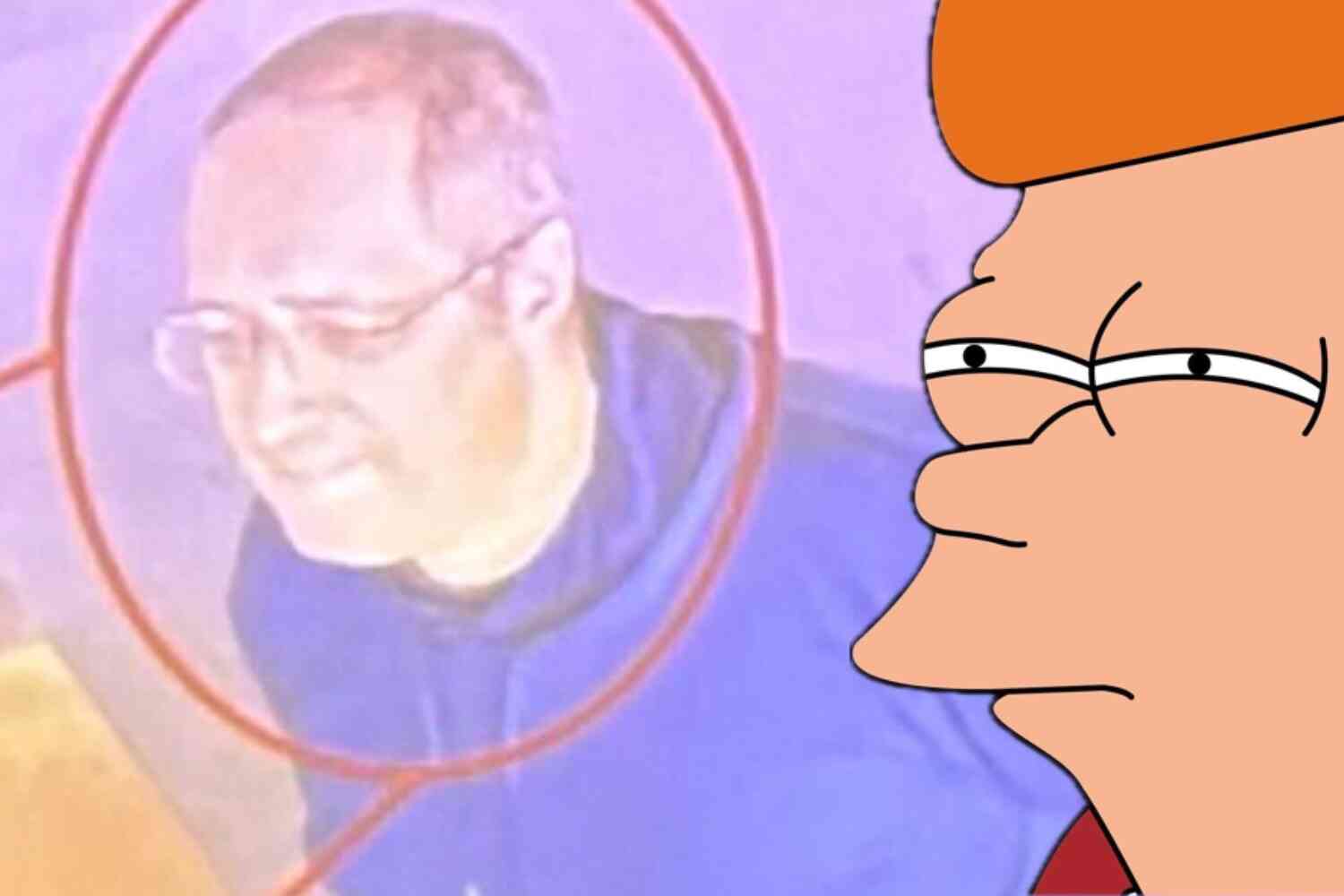Today's Friday, so I figured a little history mixed with folklore would be a good break from the news cycle.
Enter the "Moon-Eyed People":
THE MOON-EYED PEOPLE!!
If that doesn't send shivers down your spine the next time you're walking through the Appalachian hills, I don't know what will.
The thread poster gives some background of the legend with a plaque in Fort Mountain State Park in Georgia where the remains of a European-style stone fortification can be seen.
Some historians claim that the legend states that the Moon Eyed people were white. This is likely an embellishment. But it's used to explain the existence of a few anomalous sites. Such as the vaguely European-style Fort Mountain Stone Wall
Here's what that state park plaque says:
While some legends equate the moon-eyed people with the descendants of Prince Madoc [we'll get to him in a minute], Cherokee legends tell of the moon-eyed people that inhabited the Southern Highlands before they arrived. These people are said to have been unable to see during certain phases of the moon. During one of these phases, the Creek people annihilated the race. Some believe these moon-eyes people built the fortifications on this mountain.
Other versions of the Cherokee legend tell about people with fair skin, blonde hair, and blue eyes that occupied the mountain areas until Cherokee invaders finally dispersed them. Some tales said the moon-eyed people could see in the dark, but were nearly blind in daylight. Other legends describe them as albinos.
Delaware Indian legend tells of their migration eastward from the far west and meeting a race of very tall, robust, light-skinned people they called the Allegewi, along the Mississippi and Ohio rivers. The Delaware were stopped in their advancment by the Alleqewi, until they prevailed with the support of the Iroquois, who were also moving eastward. Some surviving Allegewi went to Cherokee territory and stayted with them for a time and are remembered as Tlvni Kula, "moon eyed" people, who were tall, fair skinned, with light hair and grey eyes, and carried strange weapons and tools.
You have multiple legends from multiple Native American tribes of a group of light skinned people with blonde and red hair, blue-grey eyes, and odd tools.
And they built stone walls like you'd see here:
This tribe, the Allegewi, supposedly were attacked by Delaware and Iroquois tribes, causing the survivors to flee deep into Appalachia where the Cherokee later encountered them.
Here's where the European legend comes in.
There are also claims (including on a Fort Mountain State Park Plaque and, supposedly, by the 18th C. Cherokee chief Oconostota) that the Moon Eyed people are descendants of the Welsh prince Madoc--who, according to Welsh legend, sailed to America in 1170.
Prince Madoc is a fascinating figure out of legend. He supposedly sailed to the Americas three hundred years before Columbus, which isn't an impossible thing to imagine, considering the Viking incursions centuries earlier. There is likely a long chain of various migration events across the Atlantic and Pacific over human history that we know little to nothing about (one of many reasons that the woke worldview and its idea of indigenous land ownership is so childlike).
The English under Queen Elizabeth I used the tale of Madoc as proof that the New World belonged to them.
Another plaque on Fort Mountain shows how the fortifications there supposedly mimic the Welsh castle Dolwyddelan.
From the plaque:
Welsh and Cherokee legends coincide here on Fort Mountain. Welsh legends tell of Prince Madoc, who sailed first to Mobile Bay in 1170 AD. After a brief exploration, Madoc returned to Wales, only to sail again for the New World with numerous settlers in a fleet of ships. They never returned to Wales. In the New World, they built stone forts, including this one on Fort Mopuntain, and warred with the local Cheyenne before deciding to move west sometime around 1186 AD. Madoc's travels, first told in print about 1584, had been told in Welsh songs and stories since the twelfth century.
In 1782, ninety-year-old Cherokee chief Oconostota told John Seiver of Tennessee about the Welsh who had once "...crossed the Great Water near Mobile..." Oconostota told that these whites had built the fortifications in this country. Other American legends tell of encounters with Indians who possessed pale eyes, red hair, beards, and spoke Welsh.
Legend attributes three stone forts to Prince Madoc's people. One near DeSoto Falls, Alabama, is said to be nearly identical to the setting, layout, and method of construction od Dolwyddelan Castle in Wales, the birthplace of Madoc. From Alabama, Madoc moved to this site and hastily constructed these fortifications. Retreating from Fort Mountain, these Welsh settlers built minor fortifications in the Chattanooga area before moving to the Duck River near Manchester, Tennessee, and building fortifications now known as the Old Stone Fort.
Here's a map of what that route would have looked like, following the Alabama River up to Tennessee:
If you go even further north to Manchester, Indiana, you come to a place called the Devil's Backbone, where there are supposedly ancient fortifications (although the US military owned much of the land).
A 1989 LA Times article gives a bit of historical insight into the legend and the vigorous eye-rolling from the experts:
Excavations conducted by the anthropology department at the University of Tennessee concluded that one of the structures, known as Old Stone Fort, was built in the 3rd Century by an Indian culture that would have predated Madoc.
No Welsh artifacts were found to substantiate the persistent Madoc legend.
"In professional archeological circles, it's kind of pooh-poohed," Steve Cox, curator of the Tennessee State Museum, said. "There's no archeological evidence. That's really all that we have to go on in the prehistoric period."
Here's some more analysis from that same 1989 article:
The legend says the Welsh-Indians were forced out of Tennessee by the Cherokee and migrated north into Kentucky and the Ohio River Valley by three separate routes.
American Indians apparently first spread the tale of a race of White Indians who lived in the falls area on the Ohio, where Madoc's followers may have established their largest settlement.
George Rogers Clark, the founder of Clarksville, Ind., first heard the story from Tobacco, a chief of the Piankeshaw. The chief told of a great battle between the Red and White Indians on Sand Island in the Ohio River, in which all the White Indians were slain.
...
Maj. John Harrison, among others, has told of an extensive graveyard in that area, where thousands dead were buried in such confusion as to suggest a battle. The graveyard, if it existed, has been washed away.
Some of Clark County's earliest settlers reportedly found ancient coins and European armor, some bearing the Welsh coat of arms. All of that armor has disappeared.
Clark found some armor-clad skeletons that he thought were ancient Welshmen and jotted down his findings in his personal memoirs, Olson says. A copy of this book, in Clark's own hand, was stolen years ago from the Jeffersonville public library.
According to "Baird's History of Clark County," a tombstone dated 1186 was found in Jeffersonville in the 1800s, and early pioneers reportedly found natives throughout the interior who could converse in the Welsh language.
A skull taken from Sand Island in the 1800s was identified by a Dr. Beckwith as "not that of an Indian." Beckwith's qualifications are not known.
None of the physical evidence has been scientifically examined or confirmed. In fact, virtually all of it has disappeared.
Dang it all if this isn't fascinating.
Can you imagine it? Unlike the later British that landed at Plymouth Rock and Jamestown – places with harsher winters and growing seasons – a path up into the American interior through the Gulf of Mexico and Appalachia would have been a veritable breadbasket by comparison.
Back to the original thread starter, who posted this bit from Wikipedia:
On 26 November 1608, Peter Wynne, a member of Captain Christopher Newport's exploration party to the villages of the Monacan people, Virginia Siouan speakers above the falls of the James River in Virginia, wrote a letter to John Egerton, informing him that some members of Newport's party believed the pronunciation of the Monacans' language resembled "Welch", which Wynne spoke, and asked Wynne to act as interpreter. The Monacan were among those non-Algonquian tribes collectively referred to by the Algonquians as "Mandoag".
All of this sounds fanciful. I get that.
Let's not forget that people make up stuff all the time. Take Idaho, for example. In 1860, mining lobbyist George M. Willing said it was a Native American Shoshone word meaning "Gem of the Mountains." Congress agreed to call the entire area that's now Colorado and some of its surrounding states by the name, then found out Willing made it up, so it reversed course and stuck with Colorado.
In truth, the name came from a little girl named "Ida" that Willing had met, but the farce didn't matter. By the time the lie was discovered, there was a town in the Colorado territory named Idaho Springs, a steamboat was named Idaho, and an Idaho County popped up in the Washington Territory.
Sometimes history and legend have a weird way of blending together!
Some legend attributes a variety of Appalachian oddities to the Moon Eyed people. Like Judaculla Rock--a petroglyph boulder with over 1,500 markings. Some motifs that are not observed elsewhere.
The shape of boats used by the Mandan people (one of the tribes that supposedly had Welsh connections) inspired painter George Catlin in the 19th century, who noted a similarity to Welsh coracle boats.
Lest you think only rubes and conmen believed this story, I should note that Thomas Jefferson believed it was true and directed Lewis and Clark to find evidence while they were crossing the continent.
From Wikipedia:
Thomas Jefferson had heard of Welsh-speaking Indian tribes. In a letter written to Meriwether Lewis by Jefferson on 22 January 1804, he speaks of searching for the Welsh Indians "said to be up the Missouri". The historian Stephen E. Ambrose writes in his history book 'Undaunted Courage' that Thomas Jefferson believed the "Madoc story" to be true and instructed the Lewis and Clark Expedition to find the descendants of the Madoc Welsh Indians.
How much of this is true?
Perhaps very little, or perhaps a lot.
CNN certainly has thoughts (hint: everything is racist).
There is so much of history that we don't know.
Maybe Prince Madoc actually made it into Appalachia but his people eventually were killed off or intermarried with local tribes.
Maybe Madoc is actually a legend based on a variety of European explorations that we know very little about.
Most importantly of all, maybe the history of the Americas involves more players, intrigue, conquests, and voyages than Disney and the woke Left would have you believe.










